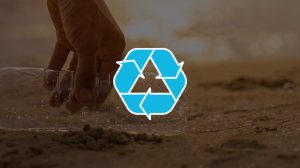Microfibres from synthetic clothing ending up in water, fish
After three loads of laundry in the last week, Parry Sound resident Cathy Nash removes a small handful of dark fibres from her recently installed washing machine filter.
“For me, it’s an awareness factor because I’d never even thought about it. So, now I think about the clothing that I buy,” said Nash.
She and another 100 volunteer households are part of a University of Toronto study that sees them collecting the microfibres for research.
Lisa Erdle, a Ph.D. student who is leading the study, said it is the first of it’s kind in the world.
“Our research from the lab shows that washing a single garment in a load of laundry can release thousands of microfibres,” said Erdle.
“So when you think of every item of clothing that you wash and the number of times you wash in a week… that’s probably hundreds of microfibres released into the water from your washing machine.”
While our clothes are in the washing machine, the synthetic fibres release tiny strands called microfibres. Then, hundreds of thousands of microfibres are estimated to go down the drain and into our water systems.
“We’re finding microfibres in almost every fish we’ve sampled… in our lab, we’re looking at fish from different lakes across Canada — from the Arctic to fresh water — and we’re finding these microfibres in almost every fish that we’ve looked at,” said Erdle.
She said this is bad news for wildlife because synthetic materials like polyester, acrylic, and spandex contain dyes and chemicals.
“We know that many of these chemicals are known carcinogens. They can be endocrine disruptors, so they can alter the hormone levels,” said Erdle.
“So many of these chemicals have known negative effects on fish.”
Kelly Drennan, executive director for the not-for-profit organization Fashion Takes Action, said she wants to remind consumers to be more selective of the materials we choose in our clothing.
While the research into the effects of microplastics on fish and wildlife is ongoing by the team in Erdle’s lab, less is known about the effects on human health.
“We have found microfibres in drinking water. Microfibres are also floating around in the air … so we are inhaling them, we are drinking them,” said Erdle.
“We don’t know what it does to us, but we’ve seen negative effects in other animals and I think there is cause to be concerned and a need for action to try to keep microfibres out of the environment.”
The Parry Sound microfibres study, which is being conducted in partnership with the environmental group Georgian Bay Forever, started in August and it is expected to continue through March 2021. But there have already been some positive early signs of microfibre diversion.
“We’re also testing the wastewater facility plant to see the diversion and we are seeing about a 10 per cent reduction in the microplastics,” said Brooke Harrison, the divert-and-capture project coordinator for the study.
Erdle, Drennan, and Harrison all agree on several of the ways we can keep microfibres out of our bodies of water. Those measures can include getting a microfibre filter installed to washing machines (these can cost around $190 plus tax and installation), purchasing less clothing made from synthetic fibres, and choosing natural fibres like cotton, linen, and silk.



